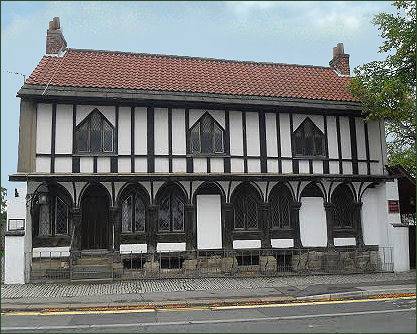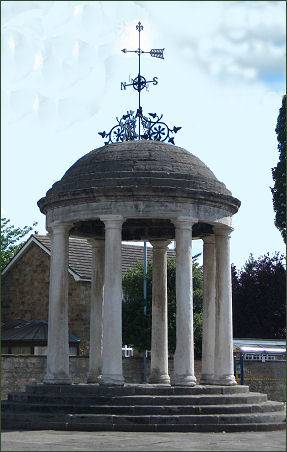Tickhill
OS Grid reference- SK 592 931
 The small town of Tickhill in South Yorkshire is situated 8 miles to the south of Doncaster and lies close to the border with Nottinghamshire.
The small town of Tickhill in South Yorkshire is situated 8 miles to the south of Doncaster and lies close to the border with Nottinghamshire.
 The town boasts several notable buildings including medieval Tickhill Castle, St Mary's Church. which dates back to the twelfth century, the parish room, the old St Leonard's Hospital, and the Buttercross.
The town boasts several notable buildings including medieval Tickhill Castle, St Mary's Church. which dates back to the twelfth century, the parish room, the old St Leonard's Hospital, and the Buttercross.
Modern research and excavations has confirmed there were settlements in the surrounding area since the Roman era. The remains of a Roman villa were discovered close to Stancil Farm, two miles to the north east of Tickhill.
Tickhill is an Old English place-name, which means either "Hill where young goats are kept" or "Hill of man called Tica". The town has no mention in the Domesday Book but was recorded as Tikehill in the twelfth century Cartulary of Nostell Priory (1109-19).
Following the Norman conquest, William the Conqueror granted lands around Tickhill to Roger de Busli, who built a castle on a small hill, which the town grew up around. Richard de Busli, grandson of Roger's brother Arnold, co-founded nearby Roche Abbey along with Richard FitzTurgis in 1147. On his his death his estates passed to Robert de Belleme, Earl of Shrewsbury, who in 1102 rebelled against King Henry 1, the castle was siezed by the Crown and all his estates forfieted.
The Market Cross (pictured right), is known locally as the Buttercross and was built in 1777 by the Rev. Christopher Alderson in an attempt to revive the weekly market.
St Leonard's Hospital (pictured above left) , a handsome timber-framed building, was originally constructed in the fifteenth century as a monastic building. It was restored in 1851. It occupies the site of St. Leonard's Hospital for leper brethren and the poor, aged and sick. The hospital was founded before in 1225 and dissolved before 1536. It was linked to the nearby Humberston Abbey. An inscription above the door suggests that the rebuilding was the work of a John Leftwul.
St Mary's Church is a Grade I listed building which dates from the early twelfth century. The present building is predominantly of Perpendicular style with glimpses of earlier Norman, Early English and Decorated styles. In the north west corner of the church is the much battered tomb of Sir Thomas Fitzwilliam and Lucy Neville. Thomas is thought to have fought for King Richard III at Bosworth. His wife Lucy was the daughter of John Neville, Marquis Montagu and was a cousin of Edward IV and Richard III. She married as her second husband Sir Anthony Browne.
Tickhill Castle has had an eventful and tumultuous history. It began life as an eleventh century motte and bailey earthwork which was known as Blythe Castle. It was constructed by the Norman magnate Roger de Busli, who is mentioned as a major landholder in the Domesday Survey of 1086.
